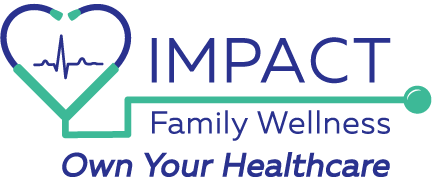Measles in Texas: Primary Care Tips to Stay Safe, Spot Symptoms, and Know When to Call Your Provider
Key Takeaways:
- Texas has reported an increase in measles cases in 2025, with confirmed outbreaks in multiple counties.
- Koplik spots and flu-like symptoms often appear before the measles rash and can aid in early detection.
- Two doses of the MMR vaccine provide strong protection, with about 97% effectiveness.
- Vitamin A may be used during treatment to reduce complications in children with measles.
- Unvaccinated individuals exposed to measles may be required to quarantine for up to 21 days.
Measles in Texas: Primary Care Tips to Stay Safe, Spot Symptoms, and Know When to Call Your Provider
In early 2025, Texas began reporting an alarming rise in confirmed cases of measles—a disease once declared eliminated in the United States in 2000. What started with a few isolated cases quickly escalated into a broader public health concern, with clusters emerging across various counties, especially in West Texas.
As of April, the Texas Department of State Health Services (DSHS) has reported dozens of cases, prompting increased surveillance and renewed public education efforts.
This outbreak is not confined to Texas. Neighboring states like New Mexico have also reported a growing number of infections, raising questions about how a vaccine-preventable illness like measles could make such a strong comeback in a country with established immunization programs.
Why Measles Is Making a Comeback
Several interconnected factors are contributing to the resurgence of measles in 2025, not only in Texas but across multiple U.S. regions.
1. Vaccine Hesitancy
One of the primary drivers of the outbreak is declining vaccination rates. Measles is highly preventable with the MMR (measles, mumps, and rubella) vaccine, which has been proven to be safe and over 97% effective when two doses are administered.
However, misinformation about vaccine safety continues to circulate widely, especially on social media platforms. This has led to a growing number of parents choosing not to vaccinate their children, leaving entire communities vulnerable to outbreaks.
In Tarrant County, Texas, Mercy Culture Preparatory Academy has garnered attention for having the state's lowest measles vaccination rate. School leaders have publicly embraced this status, reflecting how deeply vaccine misinformation has permeated the community.
This situation underscores the challenges public health officials face in countering false narratives and promoting vaccination in areas where misinformation is prevalent.
2. Funding Cuts and Public Health Gaps
Recent reductions in funding for public health initiatives have left many local agencies under-resourced. According to NBC News, cuts to the U.S. Department of Health and Human Services (HHS) programs have impacted vaccine outreach, education, and availability in certain communities.
When public health infrastructure weakens, so does the ability to contain preventable diseases before they spread.
3. Misinformation and Mixed Messaging
Contradictory public messages from political figures and influencers have created confusion about the necessity and safety of vaccines.
While health authorities like the CDC and WHO remain clear in their guidance, opposing voices—often without scientific credentials—continue to gain traction. This confusion has eroded public trust, particularly in communities already facing healthcare access barriers.
Impact on Public Health Systems and Community Spread
Measles is one of the most contagious viruses known to science. Measles is known to remain in the air for up to two hours after an infected person has left the area, and up to 90% of unvaccinated individuals who come into contact with the virus will become infected.
This level of contagiousness puts tremendous pressure on hospitals, schools, and local health departments.
Hospitals, particularly in rural areas, have struggled with aging infrastructure and limited resources, making it difficult to manage the surge in suspected cases. The outbreak has highlighted the need for improved public health infrastructure to effectively contain such infectious diseases.
Schools in affected districts have also taken measures to control the spread of measles. For instance, in Lubbock, children at a day care with confirmed cases were required to stay home for 21 days post-exposure if they were unvaccinated. Additionally, some schools have reviewed vaccination records and may temporarily exclude unvaccinated students to prevent further transmission.
Moreover, the outbreak has highlighted the gaps in adult immunity. Some adults may have received only one dose of the vaccine or none at all, depending on the era in which they were born. This has led to increased demand for immunity screening and booster vaccinations.
How Health Agencies Are Handling the Outbreak
The Centers for Disease Control and Prevention (CDC) and the Texas Department of State Health Services (DSHS) have been working together to manage case tracking, vaccine distribution, and public outreach. Mobile vaccination clinics have been deployed in affected regions, particularly in West Texas counties like Gaines, Lubbock, and Midland.
The CDC has also issued updated guidance to healthcare providers on diagnosis, isolation protocols, and reporting procedures.
Statements from Officials and Public Health Alerts
In early April, Texas health officials released a statewide health advisory urging residents to verify their vaccination status and seek medical care promptly if symptoms develop. The alert emphasized the contagious nature of measles and warned of potential school and workplace exclusions for unvaccinated individuals.
Public figures and local health leaders have participated in press briefings to reinforce vaccine safety and encourage community action. Bilingual educational materials and targeted social media campaigns are also being used to reach hesitant populations.
Community Impact and Funding Cuts
The outbreak has exposed weaknesses in local health infrastructure—particularly in under-resourced rural counties. Budget cuts to the U.S. Department of Health and Human Services (HHS) in previous years have hindered immunization outreach and slowed public education initiatives, as reported by NBC News.
Clinics are struggling to meet the surge in demand for vaccinations and immunity screenings, while schools and employers face difficult decisions about excluding unvaccinated individuals.
Broader Policy and Public Trust in Science
Beyond the outbreak itself, this situation reflects a growing divide in public attitudes toward science, vaccines, and health policy. Mixed messages, online misinformation, and politicized health debates have eroded trust in institutions—making it harder to execute rapid and effective responses to disease outbreaks.
Experts stress the importance of rebuilding trust through transparency, community engagement, and consistent public messaging grounded in medical evidence.
How Measles Spreads and Who’s at Risk
Measles isn’t just highly contagious—it spreads easily, even before symptoms appear. Understanding how it transmits and who is vulnerable can help prevent further spread and guide effective public health responses.
How Contagious Is Measles?
Measles is considered one of the most infectious diseases in the world. It spreads through airborne droplets released when an infected person coughs, sneezes, or talks. Unlike many respiratory viruses, measles can linger in the air or on surfaces for up to two hours, which means transmission can occur even without direct contact.
The basic reproduction number (R0) for measles is between 12 and 18, meaning one infected person could potentially infect up to 18 others in an unvaccinated population. For comparison, the seasonal flu has an R0 of around 1.3, and the original strain of COVID-19 had an R0 of about 2–3.
People with measles are contagious from four days before to four days after the rash appears, which makes early containment challenging. During this period, they may unknowingly spread the virus to others, especially in crowded settings like schools, clinics, or public transportation.
Can You Get Measles Even If Vaccinated?
The measles component of the MMR (measles, mumps, and rubella) vaccine is about 93% effective after one dose and 97% effective after two doses, according to the CDC. While breakthrough cases are rare, they can occur, especially in individuals who only received one dose or have compromised immune systems.
Immunity from the vaccine typically lasts for life, but waning immunity has been observed in some adults—particularly those born between 1957 and 1989 who may have received only one dose or an early, less effective version of the vaccine.
For adults unsure of their vaccination status, a blood test (titer) can confirm immunity. The CDC recommends that anyone at increased risk—such as international travelers, healthcare workers, or those in outbreak areas—ensure they are fully vaccinated.
Where in Texas Is the Measles Outbreak?
The current measles outbreak has affected multiple parts of Texas, with a concentration of confirmed cases in the western region. Local health officials are working quickly to contain the spread and raise awareness, particularly in areas with low vaccination coverage.
Latest Confirmed Locations
According to updates from the Texas Department of State Health Services (DSHS) and confirmed news sources like NBC and Reuters, cases have been reported in:
- Cochran County
- Dallam County
- Dawson County
- Gaines County
- Garza County
- Lynn County
- Lamar County
- Lubbock County
- Terry County
- Yoakum County
While some cases are travel-related, several have resulted from local transmission—especially in communities with lower immunization rates. Contact tracing and mobile vaccination units have been deployed in these areas to limit further exposure.
Community and Regional Responses
Local hospitals and clinics have been urged to isolate suspected measles cases immediately. Schools in affected areas are reviewing vaccination records and may temporarily exclude unvaccinated students to prevent further spread, following CDC guidelines.
Public health campaigns, including mobile clinics and multilingual information sessions, have been launched in partnership with community organizations to boost vaccination rates and combat misinformation.
Recognizing and Responding to Measles Symptoms
Early identification of measles can prevent further spread and ensure timely treatment. While symptoms may look similar across age groups, there are some differences between how the disease presents in children versus adults. It’s also important to distinguish measles from other common conditions like heat rash, which can share overlapping features.
What Do Measles Look Like?
Measles typically begins with symptoms that resemble a common viral illness:
- High fever (often over 101°F)
- Cough
- Runny nose
- Red, watery eyes (conjunctivitis)
These early signs are followed by the appearance of Koplik spots—tiny white spots inside the mouth that are unique to measles—and then the most recognizable symptom: a red, blotchy rash.
The rash usually starts on the face at the hairline and spreads downward to the rest of the body, including the trunk, arms, and legs. It often merges into larger patches and may feel slightly raised. The rash lasts about 5–6 days and may be accompanied by skin peeling as it fades.
Differences Between Children and Adults
While the symptoms are broadly similar, adults may experience:
- More severe fevers and fatigue
- Longer recovery times
- Greater risk of complications, such as pneumonia or encephalitis (brain swelling)
Children, especially those under 5, are also at higher risk for complications, including ear infections and diarrhea, which can lead to dehydration.
Measles vs. Heat Rash: What Are the Differences?
During warmer months or in hot climates like parts of Texas, heat rash can easily be mistaken for measles. However, there are some key distinctions that can help tell them apart.
| Feature | Measles | Heat Rash (Prickly Heat) |
|---|---|---|
| Onset | Begins with fever, then rash appears after 3–5 days | Appears quickly, especially after sweating or overheating |
| Rash Appearance | Red, blotchy, often starts on face and spreads | Tiny red bumps or clear blisters, usually localized |
| Symptoms Before Rash | Fever, cough, runny nose, conjunctivitis, body aches | Usually no systemic symptoms |
| Rash Distribution | Spreads from head to toe | Mostly affects areas with friction (neck, back, armpits) |
| Itchiness | Generally not itchy | Often itchy or prickly |
| Duration | Lasts 5–6 days, fades gradually | Clears within a few days with cooling and hygiene |
Tips for Accurate Self-Identification
- If a rash is accompanied by fever, cough, and red eyes, it’s more likely to be measles.
- If the rash appears suddenly after heat exposure and feels itchy, it could be heat rash.
- When in doubt,
consult a healthcare provider, especially during an active measles outbreak.
What to Do If You’re Exposed
If you've come into contact with someone who has measles—especially during an active outbreak—knowing what to do next is important not only for your health, but also for the safety of those around you. Prompt action can help prevent further spread of the virus and reduce complications.
Do You Need to Take Quarantine Measures?
Yes—quarantine or isolation may be recommended depending on your vaccination status and whether you are showing symptoms.
According to the Centers for Disease Control and Prevention (CDC), individuals who are not fully vaccinated and have been exposed to measles should quarantine for up to 21 days, which is the incubation period of the virus. This is especially important for:
- School-aged children who haven't had two doses of the MMR vaccine
- Adults born after 1957 without documented immunity
- Immunocompromised individuals
In Texas, the Department of State Health Services (DSHS) recommends excluding unvaccinated individuals from schools or workplaces if they've been exposed and cannot confirm immunity. In certain cases, health authorities may require isolation even for asymptomatic individuals during high-risk periods.
Steps to Take After Potential Exposure
If you believe you’ve been exposed to measles:
- Check your vaccination records. If you’ve had two doses of the MMR vaccine, you’re 97% protected.
- Monitor for symptoms—especially fever, cough, and rash—for at least 21 days after exposure.
- Avoid public places during the monitoring period if you’re unvaccinated or immunocompromised.
- Contact your healthcare provider to discuss whether post-exposure prophylaxis (like immune globulin) or a catch-up vaccine is appropriate.
Prevention: Vaccines and Vitamin A – What Really Works?
The most effective way to prevent measles is through vaccination. While Vitamin A has supportive uses in treatment, it is not a substitute for immunization.
The Role of the MMR Vaccine
The MMR (measles, mumps, rubella) vaccine is a well-established preventive measure with decades of evidence supporting its safety and efficacy. According to the CDC, one dose is about 93% effective, while two doses are approximately 97% effective at preventing measles.
Schedule for Children and Adults:
- First dose: 12–15 months of age
- Second dose: 4–6 years of age
- Adults
born after 1957 without immunity: at least one dose, or two if in high-risk settings (e.g., healthcare or international travel)
Myths vs. Facts on Vaccine Safety
Despite misinformation circulating online, the MMR vaccine:
- Does not cause autism, as repeatedly confirmed by multiple large-scale studies
- Has a long-standing record of safety and effectiveness
- Rarely causes side effects, and when it does, they are typically mild (e.g., low-grade fever or soreness at the injection site)
Why Vitamin A Is Sometimes Used with Measles
Vitamin A is used in treating measles, particularly in children, to reduce the risk of complications like pneumonia and vision problems.
The World Health Organization (WHO) recommends high-dose Vitamin A supplementation for children diagnosed with measles in areas with high rates of deficiency or malnutrition.
However, Vitamin A is not a preventative measure against the virus. It serves as a supportive therapy, not a substitute for the MMR vaccine. Using it in place of vaccination is not supported by medical or scientific guidelines.
Clear Differentiation: Prevention vs. Supportive Care
- MMR vaccine: Prevents measles infection by building long-term immunity.
- Vitamin A: Supports recovery in diagnosed cases but does not prevent infection.
What You Can Do Right Now to Help Stop the Spread
The 2025 Texas measles outbreak is a clear reminder that vaccine-preventable diseases can and will return if public health vigilance fades. With rising case counts, strained local clinics, and school disruptions, the ripple effects are being felt throughout communities large and small.
Avoid misinformation. Look to trusted sources like the CDC, your local health department, and licensed primary healthcare providers for guidance.
Direct Primary Care providers like Impact Family Wellness also play a key role by offering accessible, personalized care and helping patients stay up to date with their vaccination and wellness needs.
Together, informed decisions and community cooperation can stop the spread and protect the most vulnerable among us.
Learn more about our vaccination programs and start making your health a priority.
FAQs
Is measles deadly in adults?
While measles is more commonly severe in children under five, adults—especially those with weakened immune systems or underlying health conditions—can experience serious complications. These may include pneumonia, encephalitis (brain swelling), and in rare cases, death. Prompt medical attention is critical.
What should I do if I was exposed but feel fine?
If you’ve been exposed, monitor yourself closely for symptoms for 21 days, which is the incubation period. Even if you feel fine, you could still be contagious if you're not immune. Check your vaccination records and contact your healthcare provider, especially if you’re unvaccinated or unsure of your immunity.
Can I get tested to check my immunity?
Yes. A blood test called a measles IgG antibody titer can determine whether you have immunity. This is especially useful for adults who are unsure about their vaccination status or have lost documentation. You can go to websites that offer direct to consumer testing or contact your local health service agency.
Do I need a booster shot as an adult?
If you received two doses of the MMR vaccine, a booster isn’t typically necessary. However, adults born between 1957 and 1989 who only had one dose may benefit from a second. Healthcare workers, international travelers, and people in outbreak areas may be advised to get revaccinated.
What’s the difference between measles and other viruses with rashes?
Measles typically begins with cold-like symptoms, followed by a high fever and a spreading rash that starts on the face. Other viral rashes (like rubella or roseola) may have different symptom patterns and milder presentations. A confirmed diagnosis requires clinical evaluation and sometimes lab testing.










